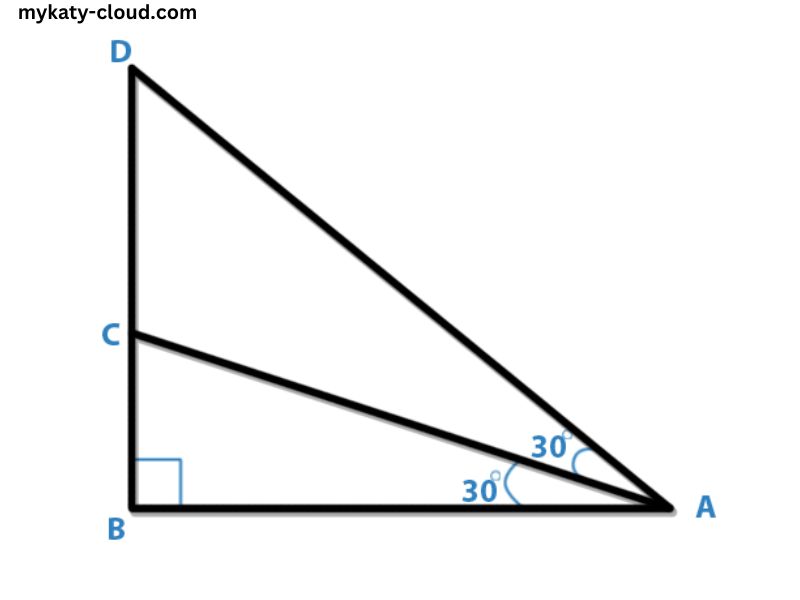In our information-saturated world, we are constantly bombarded with claims, assertions, and statements from various sources. Distinguishing fact from fiction has become an increasingly challenging task, as misinformation and falsehoods can spread like wildfire, obscuring the truth. As we navigate this complex landscape, it is crucial to develop the ability to discern which statements are true and which are not.
The concept of true statements is rooted in the principles of logic and reasoning. A true statement is one that accurately reflects reality and can be verified through empirical evidence or logical deduction. True statements are not mere opinions or beliefs; they are grounded in objective facts and data.
Identifying true statements is essential for making informed decisions, fostering critical thinking, and promoting a well-informed society. By separating truth from falsehood, we can engage in meaningful discourse, challenge assumptions, and ultimately arrive at a deeper understanding of the world around us.
The importance of verifying information
In an era where information is readily available at our fingertips, it is tempting to accept claims at face value without scrutiny. However, the ease of access to information does not guarantee its accuracy or truthfulness. Verifying information has become a crucial step in discerning truth from fiction.
Failing to verify information can have serious consequences, ranging from personal misinformation to the propagation of harmful ideologies and the erosion of public trust. Unchecked misinformation can lead to poor decision-making, perpetuate biases, and impede progress in various domains, from science and technology to politics and social issues.
By cultivating a habit of verifying information, we empower ourselves to make informed choices, engage in productive discussions, and contribute to a more knowledgeable and responsible society. It is a responsibility we all share to ensure that the information we consume and disseminate is grounded in truth.
Common misconceptions and false statements
Throughout history, numerous misconceptions and false statements have pervaded various aspects of human knowledge and understanding. These misconceptions can stem from a variety of sources, including:
- Lack of scientific understanding
- Cultural biases and traditions
- Misinterpretation of data or evidence
- Intentional deception or propaganda
- Reliance on anecdotal evidence or urban legends
Some examples of common misconceptions and false statements include:
- The Earth is flat.
- Vaccines cause autism.
- Lightning never strikes the same place twice.
- Humans only use 10% of their brain.
- Shaving makes hair grow back thicker.
These misconceptions can persist due to a lack of critical thinking, confirmation bias, or the tendency to accept information that aligns with existing beliefs. Challenging these false statements requires a commitment to seeking out reliable sources, analyzing evidence objectively, and embracing a willingness to change one’s mind in the face of compelling evidence.
The role of critical thinking in determining truth
Critical thinking plays a vital role in determining which statements are true and which are false. It involves the ability to analyze information objectively, question assumptions, and evaluate evidence from multiple perspectives. Critical thinking is not merely skepticism or doubt; it is a systematic approach to understanding and assessing claims and arguments.
To engage in critical thinking, we must cultivate several key skills:
- Questioning assumptions: We should challenge our own preconceived notions and biases, as well as those presented by others, by asking probing questions and seeking clarification.
- Evaluating evidence: We must learn to assess the quality, relevance, and credibility of the evidence presented to support a claim, recognizing potential biases or limitations.
- Considering alternative perspectives: By exploring different viewpoints and counterarguments, we can gain a more comprehensive understanding of an issue and avoid falling into the trap of confirmation bias.
- Drawing logical conclusions: Critical thinking involves the ability to analyze information logically, identify logical fallacies, and draw well-reasoned conclusions based on the available evidence.
By embracing critical thinking, we equip ourselves with the tools necessary to navigate the complexities of truth and falsehood, separating fact from fiction and making informed decisions that contribute to personal growth and societal progress.
Strategies for fact-checking and finding reliable sources
In the quest to determine which statements are true, it is essential to develop effective strategies for fact-checking and identifying reliable sources of information. Here are some proven approaches:
- Consulting authoritative sources: Rely on reputable and well-established sources, such as peer-reviewed academic journals, government agencies, and respected non-profit organizations, which adhere to rigorous standards of research and fact-checking.
- Cross-referencing information: Compare information from multiple sources to identify consistencies and discrepancies, and cross-check facts against independent, credible sources to verify their accuracy.
- Utilizing fact-checking websites: Leverage the expertise of dedicated fact-checking organizations, such as PolitiFact, Snopes, or FactCheck.org, which employ teams of researchers to investigate and debunk false claims.
- Examining source credibility: Evaluate the credibility of the source by considering factors such as the author’s expertise, potential biases, and the presence of references or citations to support their claims.
- Applying the CRAAP test: The CRAAP test (Currency, Relevance, Authority, Accuracy, and Purpose) is a useful framework for evaluating the reliability and quality of information sources.
By employing these strategies, we can increase our chances of accessing accurate and trustworthy information, enabling us to make informed decisions and distinguish truth from falsehood more effectively.
Analyzing evidence and evaluating credibility
Once we have identified potential sources of information, the next step is to analyze the evidence presented and evaluate its credibility. This process involves a critical examination of the data, methodologies, and reasoning used to support a particular statement or claim.
When analyzing evidence, it is crucial to consider the following factors:
- Source credibility: Assess the reputation, expertise, and potential biases of the source providing the evidence. Credible sources are typically well-established, transparent about their methods, and open to scrutiny.
- Methodology: Examine the research methods, data collection processes, and analytical techniques employed to gather and interpret the evidence. Rigorous and well-documented methodologies lend more credibility to the findings.
- Sample size and representativeness: Evaluate whether the sample size used in the study or investigation is sufficient and representative of the population or phenomenon being studied. Larger, more diverse samples tend to produce more reliable results.
- Peer review and replication: Seek out evidence that has undergone peer review or has been replicated by independent researchers, as this process helps to identify potential flaws or biases and increases confidence in the findings.
- Logical reasoning: Analyze the logical reasoning and argumentation used to interpret the evidence and draw conclusions. Look for logical fallacies, unsupported assumptions, or gaps in the reasoning process.
By critically analyzing evidence and evaluating its credibility, we can better distinguish well-supported, reliable statements from those that lack sufficient evidence or are based on flawed reasoning or biased sources.
Debunking popular myths and falsehoods
Throughout history, numerous myths and falsehoods have persisted, often perpetuated by misinformation, lack of knowledge, or deeply ingrained cultural beliefs. Debunking these myths and falsehoods is crucial for promoting truth and combating the spread of misinformation.
Here are some examples of popular myths and falsehoods that have been debunked through scientific evidence and rigorous investigation:
- Myth: Cracking knuckles causes arthritis. Fact: Numerous studies have found no link between knuckle cracking and the development of arthritis. The cracking sound is caused by the formation and collapse of gas bubbles in the synovial fluid between joints.
- Myth: Lightning never strikes the same place twice. Fact: This myth is false. Lightning can strike the same location multiple times, especially tall structures or objects that protrude from the ground, as they provide a path of least resistance for the electrical discharge.
- Myth: Shaving makes hair grow back thicker and coarser. Fact: Shaving does not affect hair thickness or coarseness. The perception of thicker hair growth after shaving is due to the blunt, untapered ends of the newly cut hairs, which create the illusion of increased thickness.
- Myth: Carrots improve night vision. Fact: While carrots are rich in vitamin A, which is essential for eye health, they do not directly enhance night vision. This myth originated as propaganda during World War II to mislead enemy forces about the British military’s use of radar technology.
- Myth: Humans use only 10% of their brain. Fact: This myth has been thoroughly debunked by neuroscientists. Brain imaging studies have shown that the entire brain is actively engaged in various cognitive processes, and even routine tasks involve multiple regions of the brain working together.
Debunking these myths and falsehoods is essential for promoting scientific literacy, combating pseudoscience, and fostering a more informed and critical public discourse. By challenging misinformation and embracing evidence-based reasoning, we can contribute to a society that values truth and upholds the pursuit of knowledge.
The impact of misinformation on society
Misinformation, defined as false or inaccurate information that is spread intentionally or unintentionally, can have far-reaching and detrimental impacts on society. The proliferation of misinformation can erode public trust, undermine democratic processes, and even endanger lives in certain cases.
One of the most significant consequences of misinformation is the erosion of trust in institutions, authorities, and experts. When false or misleading information is widely disseminated and accepted as truth, it can undermine the credibility of legitimate sources of information and expertise. This can lead to a breakdown in social cohesion, as individuals become increasingly skeptical and divided over fundamental issues.
Misinformation can also have severe consequences in the realm of public health and safety. For example, the spread of misinformation about vaccines has contributed to a resurgence of preventable diseases, putting vulnerable populations at risk. Similarly, the dissemination of false information during natural disasters or emergencies can hinder effective response efforts and endanger lives.
In the political sphere, misinformation can distort public discourse, influence voting patterns, and undermine the integrity of democratic processes. The spread of false or misleading information can sway public opinion, polarize communities, and erode trust in the electoral system.
Furthermore, misinformation can have economic consequences, as it can influence consumer behavior, investment decisions, and market trends based on inaccurate or manipulated information.
To combat the impact of misinformation, it is crucial to promote media literacy, critical thinking skills, and fact-checking practices. Individuals, institutions, and governments must work together to identify and counter the spread of misinformation, while also fostering an environment that values truth, transparency, and evidence-based decision-making.
Examples of true statements and their significance
While our focus has been on identifying false statements and debunking myths, it is equally important to recognize and appreciate true statements that have withstood rigorous scrutiny and have contributed to our understanding of the world. Here are some examples of true statements and their significance:
- “The Earth revolves around the Sun.” This statement, first proposed by Copernicus and later confirmed by Galileo and other scientists, revolutionized our understanding of the solar system and laid the foundation for modern astronomy.
- “All living organisms are composed of cells.” This fundamental principle of biology, established by scientists like Theodor Schwann and Matthias Schleiden in the 19th century, has been instrumental in our understanding of life processes and the development of modern medicine and biotechnology.
- “Energy can neither be created nor destroyed; it can only be transformed from one form to another.” This statement, known as the law of conservation of energy, is a fundamental principle of physics that has been validated through countless experiments and observations. It has shaped our understanding of energy systems and has been crucial in the development of technologies ranging from combustion engines to nuclear power.
- “Genetic information is stored in DNA molecules.” This statement, proven by the groundbreaking work of James Watson, Francis Crick, and others in the mid-20th century, has revolutionized our understanding of heredity, evolution, and the fundamental building blocks of life.
- “Climate change is primarily caused by human activities that release greenhouse gases into the atmosphere.” This statement, supported by overwhelming scientific evidence from various fields, including atmospheric science, climatology, and Earth system modeling, highlights the urgent need to address the impacts of human activities on the global climate system.
These true statements, and countless others like them, have profoundly shaped our knowledge and understanding of the natural world, enabling scientific and technological advancements that have improved human lives and expanded our horizons. They serve as a testament to the power of rigorous inquiry, evidence-based reasoning, and the relentless pursuit of truth.
Conclusion
In our journey to unveil the truth and determine which statements are true, we have explored the importance of critical thinking, fact-checking, and evidence-based reasoning. We have examined the impact of misinformation and the significance of true statements that have withstood the test of time and rigorous scrutiny.
As we navigate the complexities of our information-rich world, it is essential to cultivate a mindset that values truth, questions assumptions, and embraces the pursuit of knowledge. By doing so, we equip ourselves with the tools necessary to make informed decisions, engage in productive discourse, and contribute to a more enlightened and responsible society.
Seeking truth is not merely an intellectual exercise; it is a fundamental aspect of human progress and the advancement of knowledge. By challenging falsehoods and embracing evidence-based reasoning, we can overcome the barriers of misinformation and pseudoscience, paving the way for scientific and technological breakthroughs that improve our lives and deepen our understanding of the world around us.




